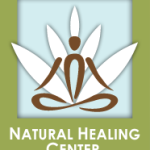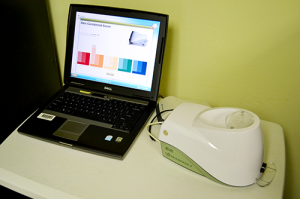What Are Antioxidants and How Do They Work?
Antioxidant Dependency
The cells in our bodies — and in every other living thing — goes through a 24 hour a day process called oxidation, where a substance known as free radicals attack cells, damages their DNA, and then creates the seed for a chain reaction of diseases. Oxidation is the reason fruit and veggies turn brown and began to rot, fish goes rancid, and a cut on your skin gets raw and inflamed (WebMD, 2005). On a larger scale, oxidation is the reason we eventually die. To offset the process of oxidation, our cells are dependent upon antioxidants.
What are Antioxidants?
 Antioxidants, such as Vitamin C, Vitamin E, Flavonoids, Polyfenols, and Caretonoinds are found in fruits, vegetables, whole grains, legumes, and nuts. These foods have a complex mix of antioxidants; consuming them regularly in your diet is essential for fighting off the free radicals which destroy cells and promote oxidation.
Antioxidants, such as Vitamin C, Vitamin E, Flavonoids, Polyfenols, and Caretonoinds are found in fruits, vegetables, whole grains, legumes, and nuts. These foods have a complex mix of antioxidants; consuming them regularly in your diet is essential for fighting off the free radicals which destroy cells and promote oxidation.
How Do They Work?
Vitamin C stops the chain reaction of free radicals before it starts by capturing the free radicals and neutralizing them. Vitamin E, is a chain breaking antioxidant. While sitting in a membrane, the outermost part of a cell, it breaks the chain reaction.
The largest class of antioxidants are Flavonoids. Flavonoids are mostly known for their anti-inflammatory protection to cells. Flavinoids can protect the heart and brain, promote blood circulation, and they also have cancer and anti tumor properties that we can benefit from (Riley, 2013).
The smaller class of antioxidants are Polyphenols, also referred to as “phenols”. Polyphenols are ‘instrumental in combating oxidative stress, a syndrome causative of some neurodegenerative and cardiovascular diseases”(Science Daily, 2013).
Caretonoids help protect healthy cells from damage caused by free radicals. They promote healthy skin, bones and immune function (McLauglin, 2013).
Are You Getting Enough Antioxidants?
By now, you may be wondering just how can you tell if you’re getting enough antioxidants. Feeling healthy and energetic may be a good sign but may not necessarily mean that your antioxidant levels are sufficient. The Natural Healing Center of Myrtle Beach uses a tool called the Biophotonic Scanner which measures the carotenoid antioxidant levels in your skin. By simply placing a portion of the palm of your hand over the scanner, your doctor can gather data that is vital to regulate and improve your overall antioxidant health. See our website and on-page-video for more information on the Biophotonic Scanner.
Reference:
WebMD (2005). Retrieved August 5, 2013 from http://www.webmd.com/food-recipes/features/how-antioxidants-work1, http://www.webmd.com/food-recipes/features/how-antioxidants-work1?page=2, http://www.webmd.com/food-recipes/features/how-antioxidants-work1?page=3
Riley, G. (2013). Retrieved August 5, 2013 from http://www.sharecare.com/health/nutrition-diet/what-are-flavonoids;jsessionid=6D6FCF84435A8DA0C10612C9171E04E6
Science Daily (2013). Retrieved August 5, 2013 from http://www.sciencedaily.com/articles/p/polyphenol_antioxidant.htm
McLughlin, A. (2013). Retrieved August, 5 2013 from http://healthyeating.sfgate.com/vegetables-high-carotenoids-2256.html


Comments are closed.